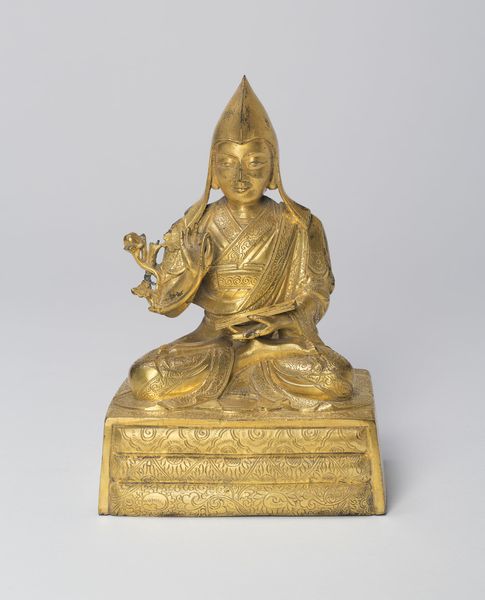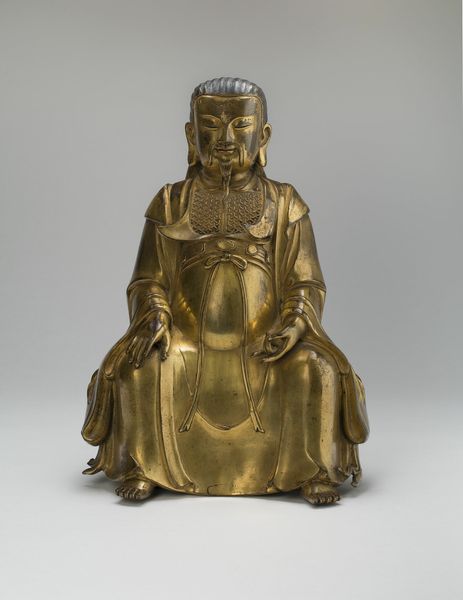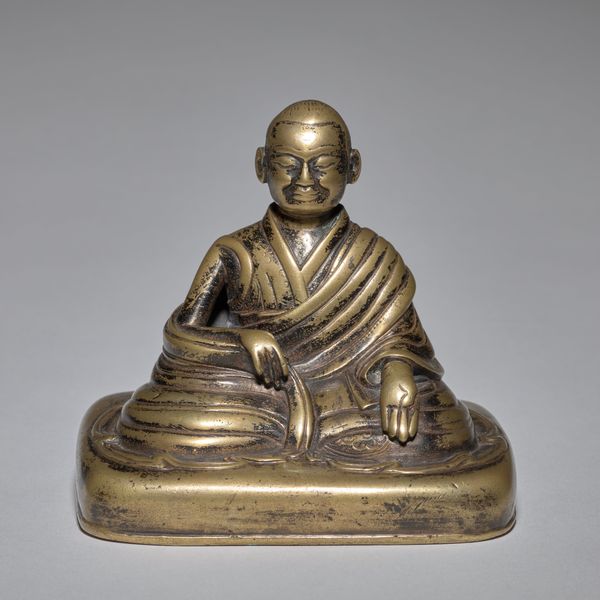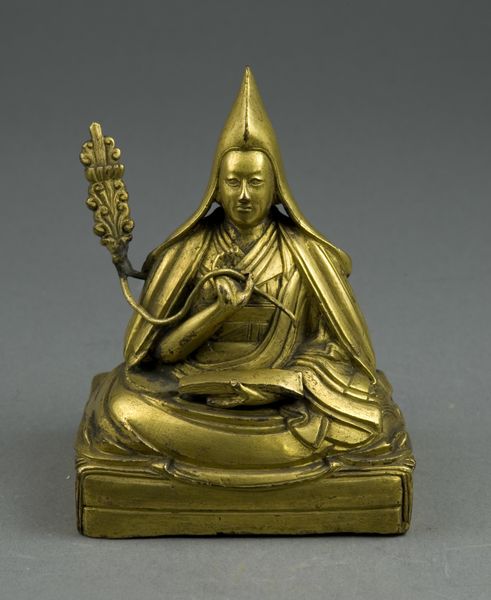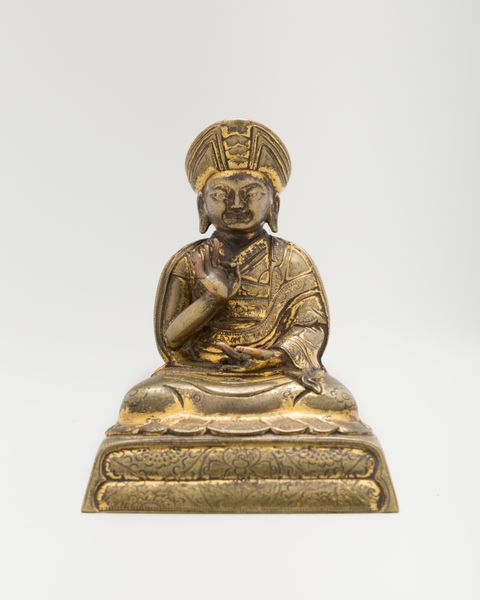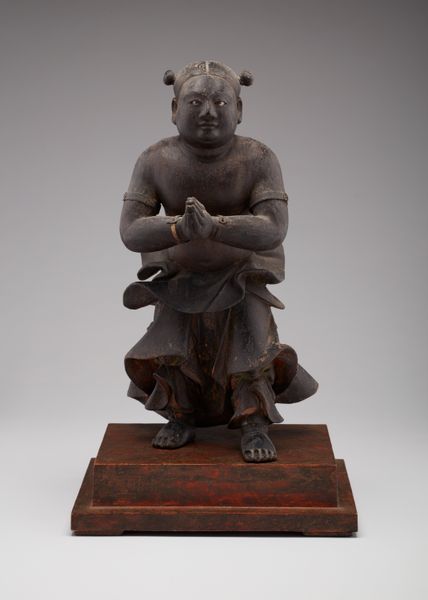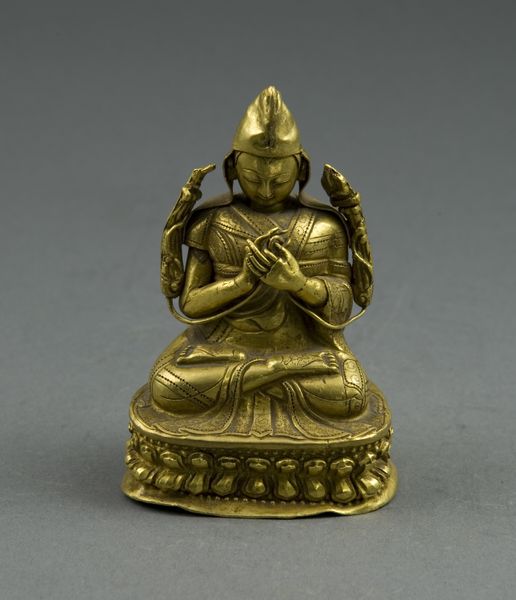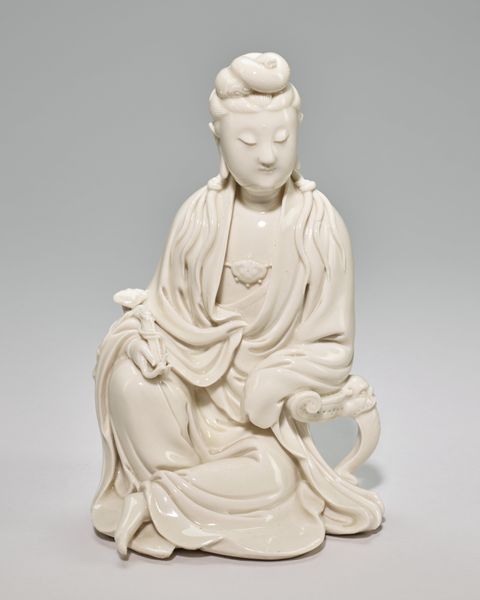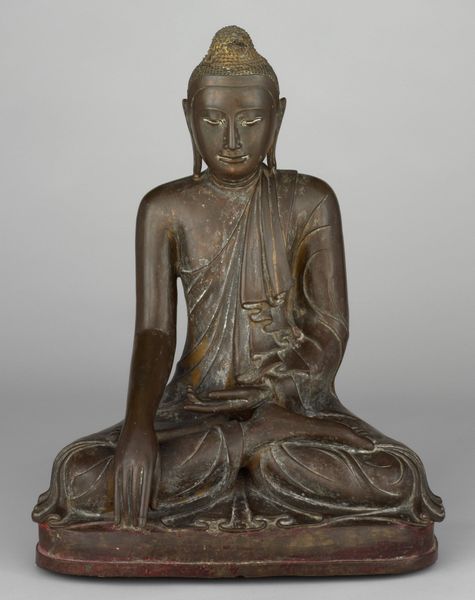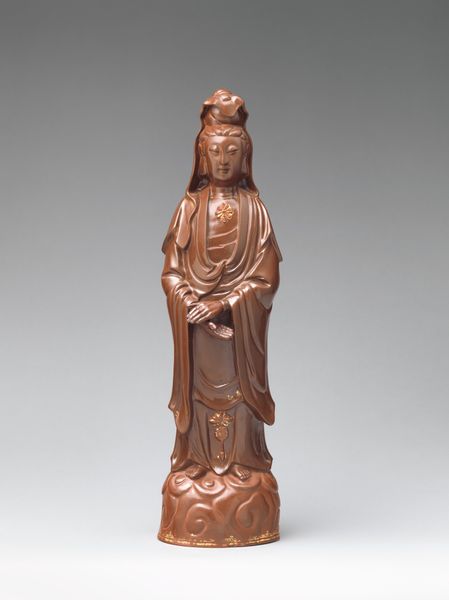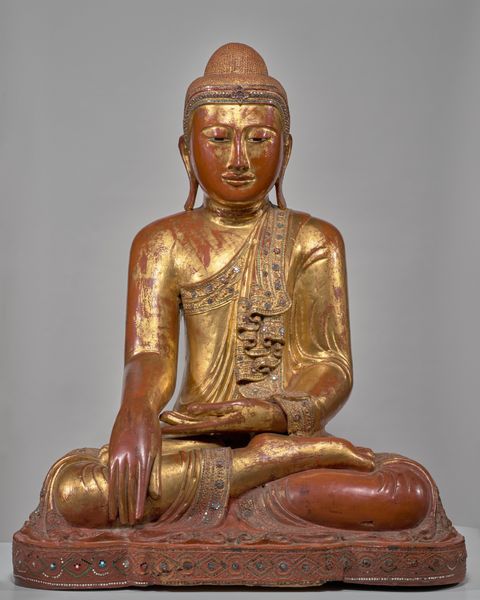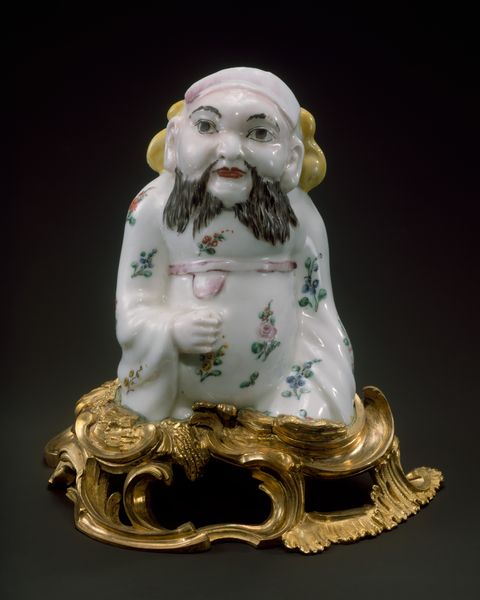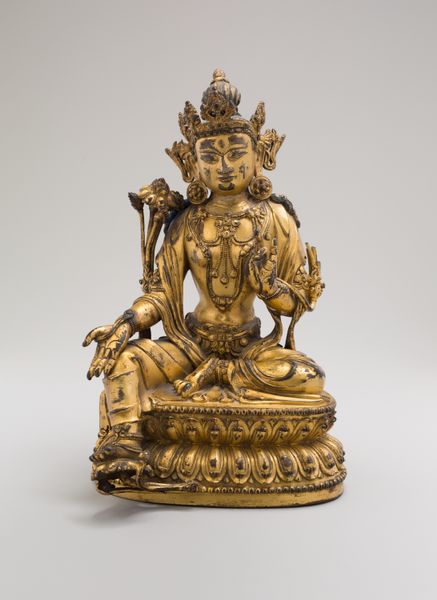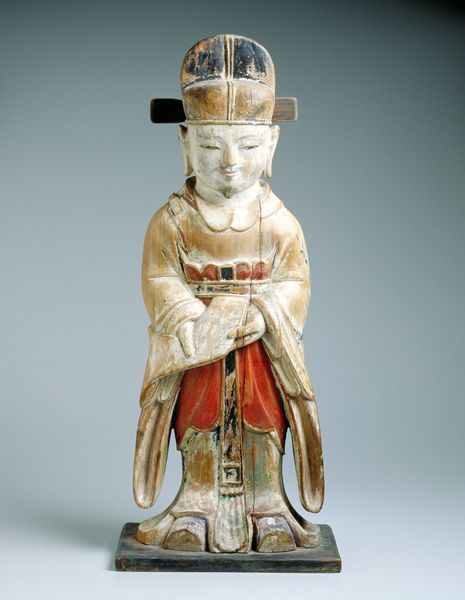
carving, gold, bronze, sculpture
#
carving
#
sculpture
#
asian-art
#
gold
#
bronze
#
sculptural image
#
figuration
#
22_ming-dynasty-1368-1644
#
sculpture
#
men
#
china
Dimensions: H. 7 1/2 in. (19 cm); W. 4 3/4 in. (12 cm); D. 2 3/4 in. (7 cm)
Copyright: Public Domain
Curator: What a radiant sculpture. This bronze depiction of the Daoist immortal Laozi dates back to 1438, crafted during the Ming Dynasty, and now resides at The Metropolitan Museum of Art. Editor: He seems so…centered. Despite the richness of the gilding and elaborate throne, there's an incredible stillness to the piece. The craftsmanship is superb, of course, but it's the serene expression that really holds my attention. Curator: The sculpture is fascinating as it portrays Laozi. Look closely at his gentle hand gesture, seemingly in mid-motion, that holds a powerful significance within Daoist iconography and symbolizes wisdom. Editor: How interesting. And the crown? Does it perhaps borrow from earlier representations of Daoist immortals and what might that regal symbolism say about Laozi’s standing during the Ming Dynasty? It would be great to dig further to explore why it would become such an attractive idea to connect Daoism and Royalty during the Ming Dynasty. Curator: The presence of the crown introduces an element of ritual significance as an imperial claim, yet perhaps with this, the sculpture aimed to bridge spirituality and temporal authority. Editor: Given that Ming rulers had a complicated, often competitive relationship with Buddhism, I’m curious about how this piece may have fit into their efforts to cultivate a more unified cultural identity in Chinese spirituality? The way Laozi is presented, almost like a kingly sage, must have carried quite a political message. Curator: Absolutely, with his gentle hand, long beard, and regal attire, Laozi seems to embody not only spiritual depth, but also a timeless wisdom that is connected to an emperor's rule, the balance of worldly order with transcendent ideals. It's a wonderful visual synthesis. Editor: The patina also holds its own story. As such a sculpture is a kind of visual anchor for cultural memory, wouldn't you say? Curator: It certainly is. The sculpture not only reflects a pivotal moment in Chinese religious and political history, it represents enduring symbols that touch the hearts and souls through space and time. Editor: What an interesting point. A potent blend of authority, spirituality, and enduring tradition indeed.
Comments
No comments
Be the first to comment and join the conversation on the ultimate creative platform.
